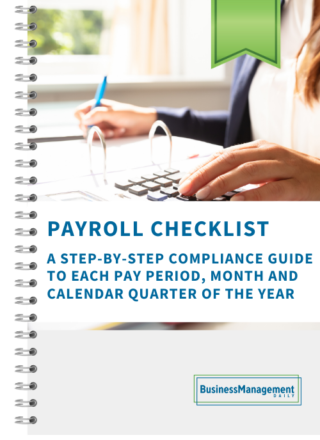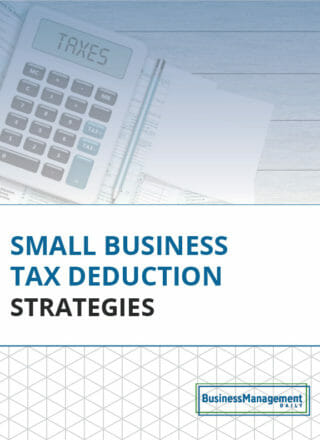Minute Taking
Successful minute taking is a cornerstone of good office management – and that’s where Business Management Daily can help. From thorough meeting event planning to taking minutes that accurately reflect the content of the meeting, our checklists and articles help improve your meeting management.
How do I write meeting minutes?
First start by establishing what the goal of the meeting notes should be. Prepare an outline or set of standards for review and approval by the key meeting attendees, i.e., your boss, board members, etc. Use the meeting agenda as a starting point to become familiar with the subject matter and have a casual understanding of terms and concepts that will be discussed.
What format should meeting minutes follow?
Pre-populate your notes with the names of the attendees, known agenda items and what’s to be voted on, if anything. Introduce the minutes with the date, time and location of the meeting, and a list of those present, broken out by staff and guests, and those who did not attend.
Then, try using this general sample outline:
1. APPROVAL OF AGENDA
MOTION: That the Board accept the agenda for the meeting as presented.
MOVED BY: ___________
SECONDED BY: _____________
Motion carried / Motion denied
Note: Anything that requires an agreement by those in attendance is considered a motion. These are usually a product of more formal meetings.
2. APPROVAL OF MINUTES
MOVED BY: ___________
SECONDED BY: _____________
Motion carried / Motion denied
3. ANNOUNCEMENTS
Note any announcements or introductory business here. If there is an action to be taken, make a note of it under a subheading marked ACTION, and in parentheses, note the name of the party responsible for carrying it out.
4. NEW BUSINESS
List all new business discussed using numerical bullets. List concerns and comments after a summary of each bit of business, as well as any votes or actions taken.
5. OPEN DISCUSSION
Optional. Use the same format as for #4, New Business.
6. BUSINESS FROM GUESTS
Optional. Use the same format as for #4, New Business.
7 ADJOURN
Note the time of adjournment.
MINUTES APPROVED BY:
____________, Chairperson
What are the most common minute-taking mistakes?
- Not setting standards in advance. Those for whom the minutes are being archived should have input.
- Being unfamiliar with the terms and concepts that will be discussed. The better your comprehension of the subject matter, the less you’ll have to ask for clarifications.
- Failing to see the big picture. Ask, “If I were looking at these minutes six months from now, what would I really want to know?”
- Assuming everyone will get the gist. Write minutes as if no one knows the meeting participants or the subject matter.
- Not establishing how to signal when there needs to be a clarification or slowdown.
- Missing something while scrambling to keep up. The best minute-takers know how to condense things in their own notes for expansion later.
- Allowing dud formatting through. Minutes present a visual challenge to the eye; there’s a lot of unfortunate but necessary clutter. Take a few minutes to make them appealing and visually clear.
What should I put in meeting minutes?
It is important to include all motions and results of votes in your meeting minutes. In addition, capture all actions to be taken and who is responsible for those next steps or follow-ups.
Also, note if anything unexpected happens, like a permanent departure of someone from the meeting, or matters that were not on the agenda. Make these a subsection under the scheduled agenda item to put them in proper context.
What can I leave out of meeting minutes?
Words like “we,” “you,” “they,” “them” or “their,” and any personal commentary you might have. Minutes are not personal, but are a reporting of what happened. You want to achieve a detached voice, as if you are an outside reporter. For example, if there are disputes between those in attendance, “discussion ensued” in the best way to summarize these instances.
What do I do with minutes when they’re completed?
Go through them to proofread and make the key data pop out visually using your numbering system, bold type, underlining, etc. The most important points need to be instantly visible. Submit the minutes to the meeting chairperson for review within 24 hours (when their memory is likely to be freshest). Scan them electronically into a dated archive; make file names descriptive enough so specific sets of minutes can be located easily. Keep hard copies as well in a special file for easy reference.

















